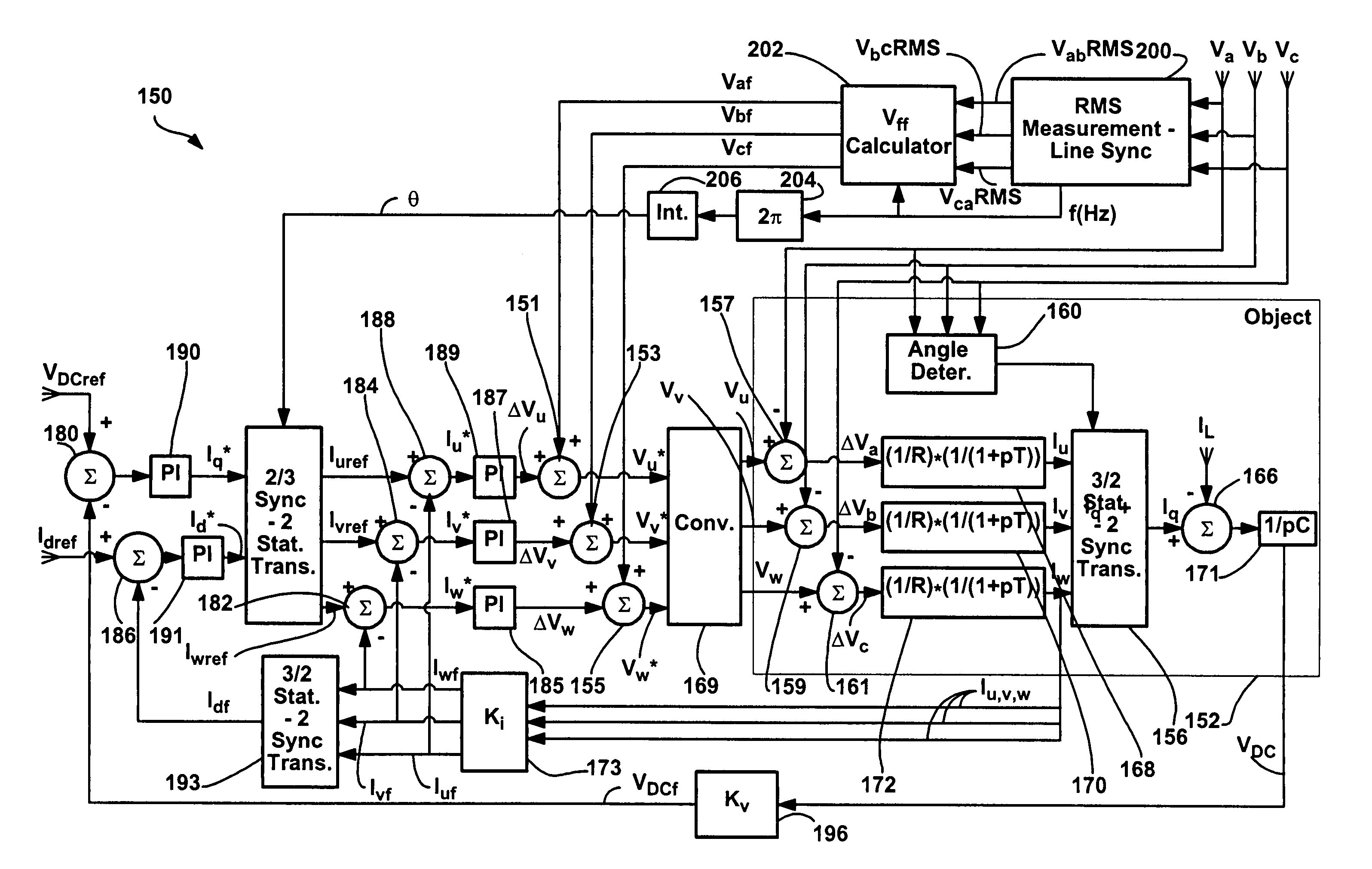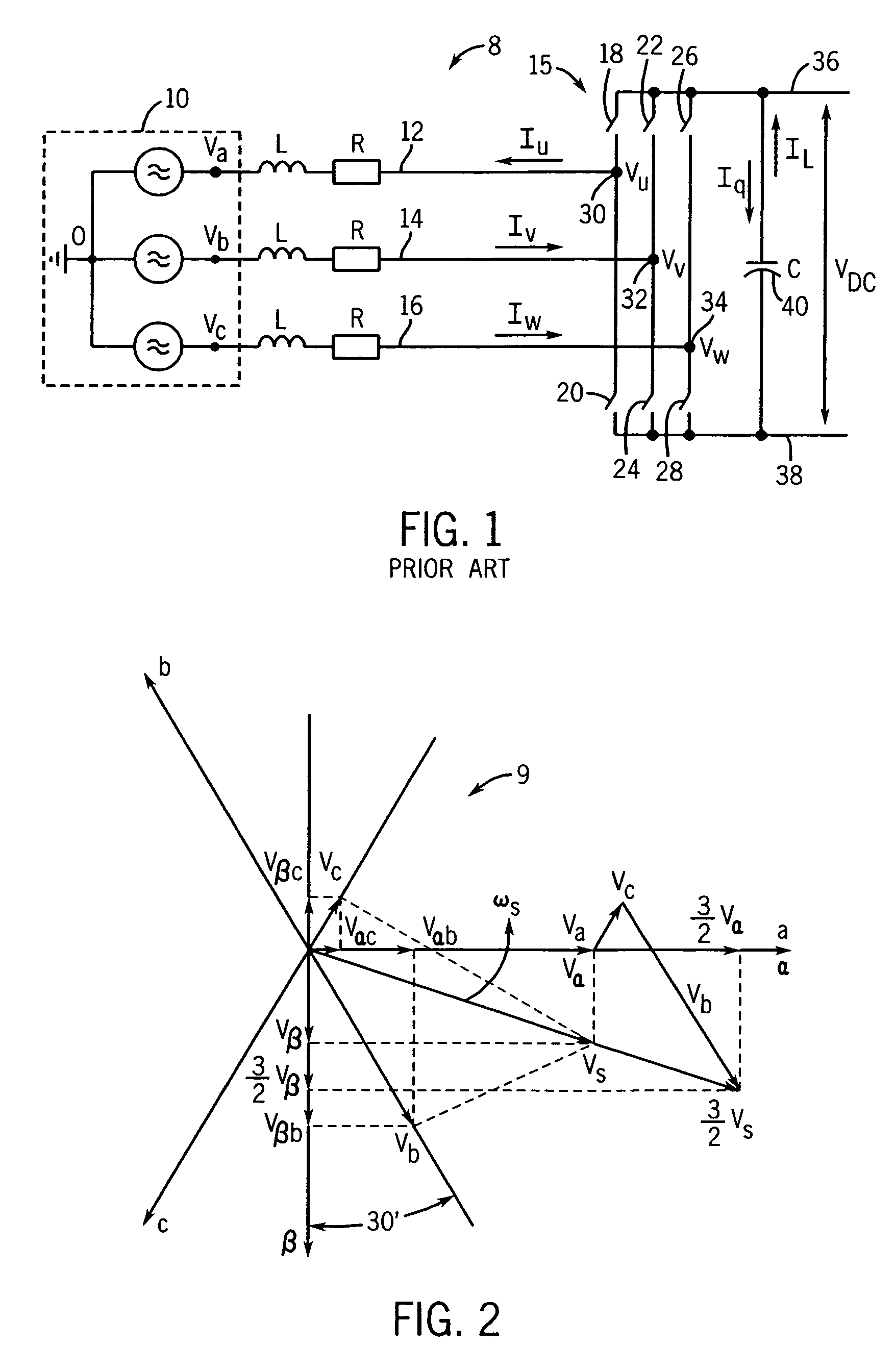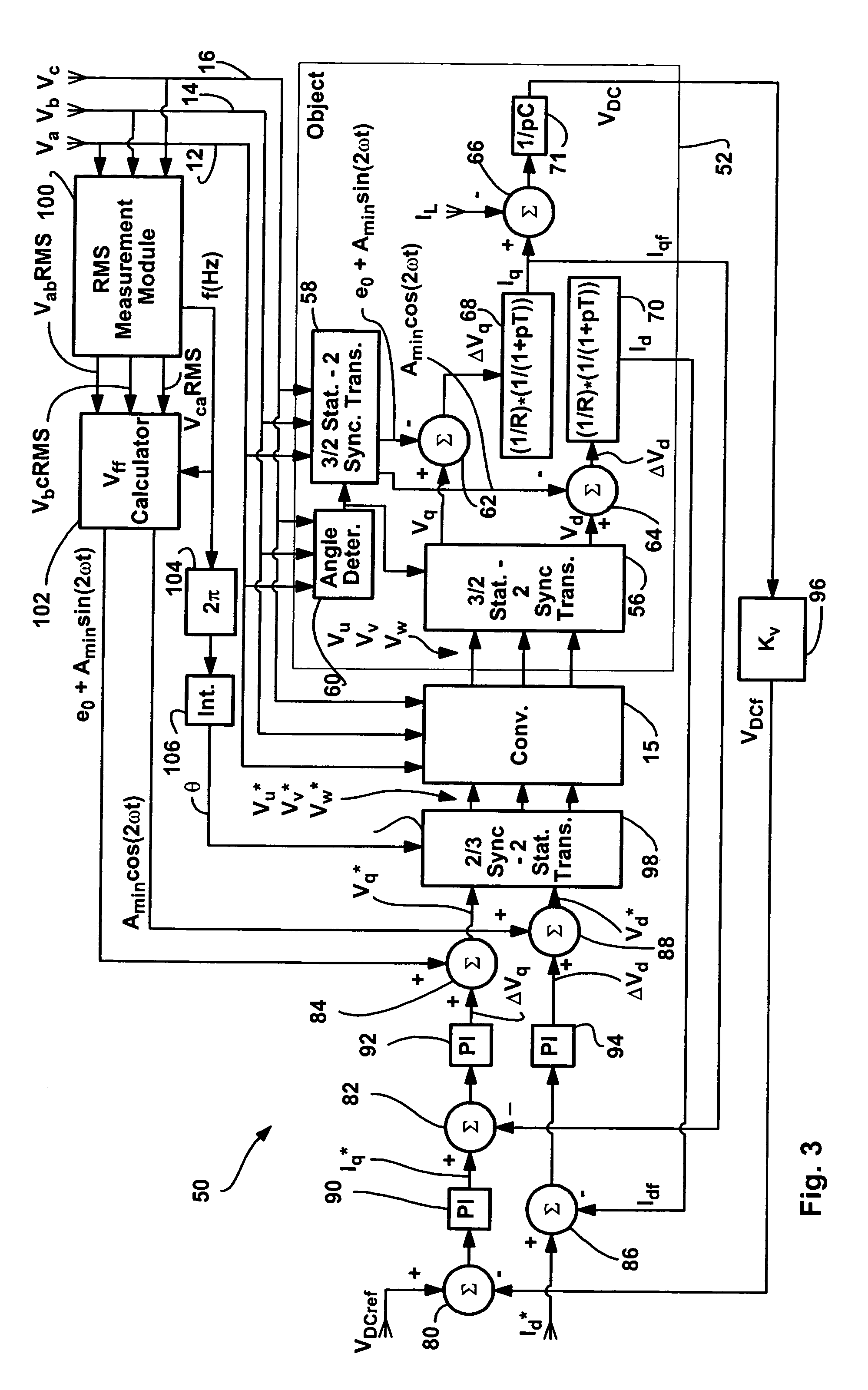Method and apparatus for rejecting the second harmonic current in an active converter with an unbalanced AC line voltage source
a technology of unbalanced ac line voltage and active converter, which is applied in the direction of dc circuit to reduce harmonics/ripples, emergency protective circuit arrangements, conversion with intermediate conversion to dc, etc., can solve the problems of significant harmonic distortion, unusable converter, hardware adds expense to the overall system, etc., and achieves the effect of reducing the second harmoni
- Summary
- Abstract
- Description
- Claims
- Application Information
AI Technical Summary
Benefits of technology
Problems solved by technology
Method used
Image
Examples
first embodiment
[0088]Referring now to FIG. 3, an exemplary controller 50 linked to a converter 15 is illustrated. Controller 50 receives a DC bus voltage reference value VDCref and controls converter 15 so that converter 15 generates a DC bus voltage VDC (see again FIG. 1) that is equal to the reference voltage VDCref. In this regard, as illustrated in FIGS. 1 and 3, three phase supply line voltages Va, Vb and Vc are provided to converter 15 and converter 15 is controlled in a manner consistent with command voltage values V*u, V*v l and V*w to cause the DC bus voltage to track the reference voltage VDCref.
[0089]In addition to the controller 50 and converter 15, a synchronous two phase dq reference frame object model 52 is illustrated for discussion purposes to simulate converter operation when unbalanced supply line voltages occur on lines 12, 14 and 16. Object model 52 includes an angle θ determiner 60, two stationary three-phase to synchronous two phase transformers 56 and 58, three summers 62, ...
second embodiment
[0102]While most control configurations operate in the synchronous two-phase dq reference frame, it is possible to configure a controller that operates in the three phase stationary frame of reference. In this case, Equations 1 through 3 and Equations 64 through 66 can be used to identify three phase feed forward voltages to substantially eliminate the second harmonic components in the line voltages and to reduce DC bus ripple.
[0103]Referring now to FIG. 5, a schematic diagram similar to the diagram provided in FIG. 3 as illustrated that includes a three phase object model 152 to illustrate the effects of active conversion with unbalanced supply line voltages, a three phase controller 150 and a converter 169. Converter 169 receives the supply line voltages Va, Vb and Vc and generates voltage values Vu, Vv and Vw as a function of command voltages V*u, V*v and V*w.
[0104]Object model 152 includes four summers 157, 159, 161 and 166, an angle determiner 160, four scalar modules 168, 170,...
PUM
 Login to View More
Login to View More Abstract
Description
Claims
Application Information
 Login to View More
Login to View More - R&D
- Intellectual Property
- Life Sciences
- Materials
- Tech Scout
- Unparalleled Data Quality
- Higher Quality Content
- 60% Fewer Hallucinations
Browse by: Latest US Patents, China's latest patents, Technical Efficacy Thesaurus, Application Domain, Technology Topic, Popular Technical Reports.
© 2025 PatSnap. All rights reserved.Legal|Privacy policy|Modern Slavery Act Transparency Statement|Sitemap|About US| Contact US: help@patsnap.com



